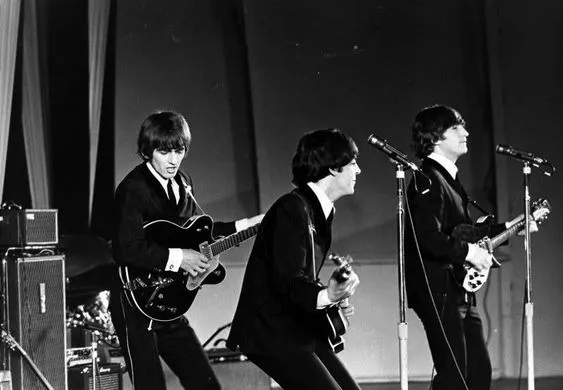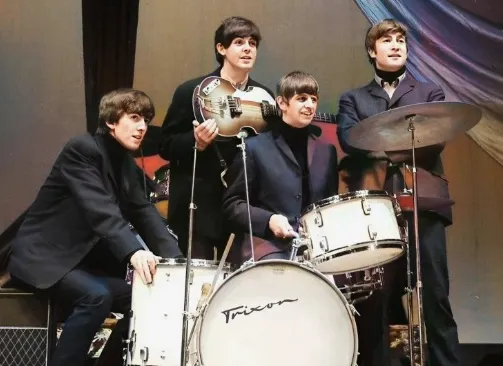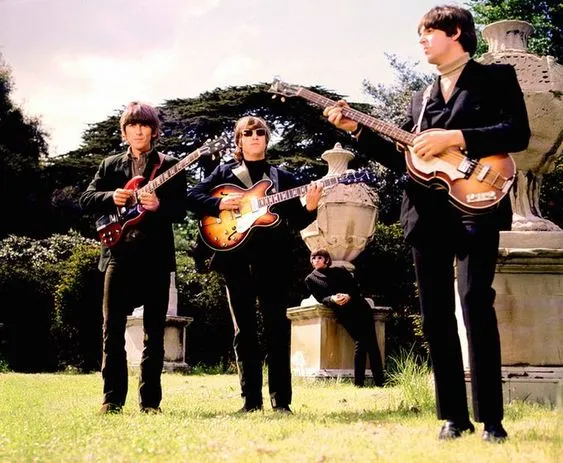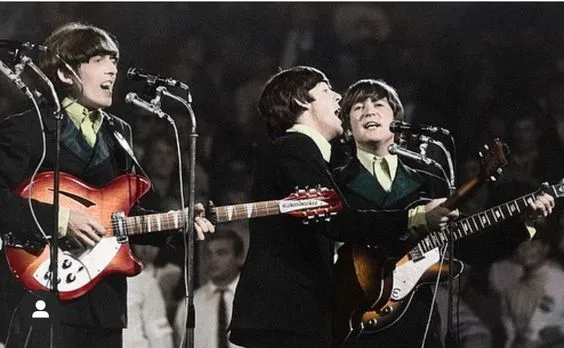About the song
(Watch the video below)
"Baby's in Black" is one of those lesser-known gems in The Beatles' repertoire, nestled among their more widely recognized hits. Released on the 1964 album "Beatles for Sale," the song was penned by John Lennon and Paul McCartney, a collaboration that typified the group's songwriting prowess.
At first listen, "Baby's in Black" might seem like a simple love song, but its lyrical depth and melancholic undertones reveal a more complex narrative. The song tells the tale of a young woman dressed in black, mourning the loss of her lover, who died tragically. This somber theme is a departure from The Beatles' usual upbeat tunes, showcasing their versatility and emotional range as songwriters.
Musically, "Baby's in Black" is characterized by its haunting melody and distinctive harmonies, which are a trademark of The Beatles' sound. The song opens with a mournful guitar riff, setting the tone for the melancholic narrative that unfolds. Lennon and McCartney's vocal harmonies are particularly noteworthy, weaving together seamlessly to create a sense of longing and sorrow.

One of the most striking aspects of "Baby's in Black" is its evocative lyrics, which paint a vivid picture of heartache and loss. The opening lines, "Oh dear, what can I do? / Baby's in black and I'm feeling blue," immediately set the scene, drawing the listener into the world of the song's protagonist. Throughout the verses, the lyrics delve deeper into the protagonist's emotions, capturing the raw pain of grief and longing.
The song's chorus serves as a poignant refrain, with the repeated line "Ah, ah, ah, ah, my baby's in black" echoing the protagonist's sense of despair and helplessness. The juxtaposition of the upbeat melody with the somber lyrics creates a sense of tension, adding to the song's emotional impact.
"Baby's in Black" also showcases The Beatles' trademark musical innovation, with George Harrison's distinctive guitar work adding depth and texture to the song. Harrison's melodic guitar lines intertwine with Lennon's rhythm guitar, creating a rich musical tapestry that complements the song's lyrical themes.

In addition to its musical and lyrical sophistication, "Baby's in Black" is notable for its historical significance within The Beatles' catalog. The song marked a turning point in the band's career, signaling their transition from the lighthearted pop songs of their early years to more introspective and mature songwriting.
"Baby's in Black" also holds a special place in the hearts of Beatles fans, many of whom appreciate its underrated status and overlooked beauty. While it may not have achieved the same level of commercial success as some of the band's other hits, the song's enduring appeal lies in its timeless melody and poignant lyrics.
In conclusion, "Baby's in Black" stands as a testament to The Beatles' unparalleled talent as musicians and songwriters. With its haunting melody, evocative lyrics, and rich musical textures, the song remains a poignant reminder of the band's enduring legacy and influence on popular music.



